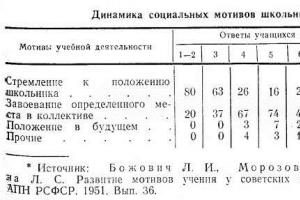In which the working fluid (gaseous or liquid) moves in a closed volume, essentially this is a type of engine external combustion. This mechanism is based on the principle of periodic heating and cooling of the working fluid. Energy is extracted from the emerging volume of the working fluid. The Stirling engine operates not only from the energy of burning fuel, but also from almost any source. This mechanism was patented by the Scotsman Robert Stirling in 1816.
The described mechanism, despite its low efficiency, has a number of advantages, first of all, it is simplicity and unpretentiousness. Thanks to this, many amateur designers attempt to assemble a Stirling engine with their own hands. Some succeed and some don't.
In this article we will look at DIY Stirling from scrap materials. We will need the following blanks and tools: a tin can (can be from sprats), sheet metal, paper clips, foam rubber, rubber band, bag, wire cutters, pliers, scissors, soldering iron,

Now let's start assembling. Here detailed instructions to how to make a Stirling engine with your own hands. First you need to wash the jar, clean sandpaper the edges. We cut a circle out of sheet metal so that it lies on inner edges banks. We determine the center (for this we use a caliper or ruler), make a hole with scissors. Next we take copper wire and a paper clip, straighten the paper clip and make a ring at the end. We wind the wire around the paperclip - four tight turns. Next, use a soldering iron to tin the resulting spiral with a small amount of solder. Then you need to carefully solder the spiral to the hole in the lid so that the rod is perpendicular to the lid. The paperclip should move freely.
After this, you need to make a connecting hole in the lid. We make a displacer from foam rubber. Its diameter should be slightly smaller than the diameter of the can, but there should not be a large gap. The height of the displacer is a little more than half the can. We cut a hole in the center of the foam rubber for the sleeve; the latter can be made of rubber or cork. We insert the rod into the resulting bushing and seal everything. The displacer must be placed parallel to the lid, this important condition. Next, all that remains is to close the jar and seal the edges. The seam must be sealed. Now let's start making the working cylinder. To do this, cut out a strip of tin 60 mm long and 25 mm wide, bend the edge 2 mm with pliers. We form a sleeve, then solder the edge, then you need to solder the sleeve to the lid (above the hole).
Now you can start making the membrane. To do this, cut a piece of film from the bag, press it inward a little with your finger, and press the edges with an elastic band. Next you need to check the correct assembly. Heat the bottom of the jar over the fire and pull the stem. As a result, the membrane should bend outward, and if the rod is released, the displacer should lower under its own weight, and accordingly, the membrane returns to its place. If the displacer is not made correctly or the soldering of the can is not airtight, the rod will not return to place. After this we make the crankshaft and struts (the crank spacing should be 90 degrees). The height of the cranks should be 7 mm, and the height of the displacers 5 mm. The length of the connecting rods is determined by the position of the crankshaft. The end of the crank is inserted into the plug. So we looked at how to assemble a Stirling engine with our own hands.

Such a mechanism will work from a regular candle. If you attach magnets to the flywheel and take the coil of an aquarium compressor, then such a device can replace a simple electric motor. As you can see, making such a device with your own hands is not at all difficult. There would be a desire.
It has supplanted other types of power plants, however, work aimed at eliminating the use of these units suggests an imminent change in leading positions.
Since the beginning of technological progress, when the use of engines that burned fuel internally was just beginning, their superiority was not obvious. A steam engine, as a competitor, contains a lot of advantages: along with traction parameters, it is silent, omnivorous, easy to control and configure. But lightness, reliability and efficiency allowed the internal combustion engine to take over steam.
Today, issues of ecology, efficiency and safety are at the forefront. This forces engineers to focus on production units powered by renewable fuel sources. In the 16th century, Robert Stirling registered an engine powered by external sources heat. Engineers believe that this unit is capable of replacing the modern leader. The Stirling engine combines efficiency, reliability, runs quietly, on any fuel, this makes the product a player in the automotive market.
Robert Stirling (1790-1878):
History of the Stirling engine
Initially, the installation was developed to replace a machine powered by steam. Boilers of steam mechanisms exploded when exceeding acceptable standards pressure. From this point of view, Stirling is much safer; it operates using temperature differences.
The principle of operation of the Stirling engine is to alternately supply or extract heat from the substance on which work is being done. The substance itself is enclosed in volume closed type. The role of the working substance is performed by gases or liquids. There are substances that act as two components; gas is converted into liquid and vice versa. The Stirling liquid piston engine is small in size, powerful, and produces high pressure.
The decrease and increase in the volume of gas during cooling or heating, respectively, is confirmed by the law of thermodynamics, according to which all components: the degree of heating, the amount of space occupied by the substance, the force acting per unit area are related and described by the formula:
P*V=n*R*T
- P is the force of gas in the engine per unit area;
- V – quantitative value occupied by gas in the engine space;
- n – molar amount of gas in the engine;
- R – gas constant;
- T – degree of gas heating in the engine K,
Stirling engine model:

Due to the unpretentiousness of the installations, engines are divided into: solid fuel, liquid fuel, solar energy, chemical reaction and other types of heating.
Cycle
The Stirling external combustion engine uses the same set of phenomena. The effect of the ongoing action in the mechanism is high. Thanks to this, it is possible to design an engine with good performance within normal dimensions.
It must be taken into account that the design of the mechanism includes a heater, a refrigerator and a regenerator, a device that removes heat from the substance and returns the heat at the right time.
Ideal Stirling cycle (temperature-volume diagram):

Ideal circular phenomena:
- 1-2 Change in the linear dimensions of a substance with constant temperature;
- 2-3 Heat removal from the substance to the heat exchanger, the space occupied by the substance constantly;
- 3-4 Forced reduction of the space occupied by the substance, the temperature is constant, heat is transferred to the cooler;
- 4-1 Forced increase in the temperature of a substance, the occupied space is constant, heat is supplied from a heat exchanger.
Ideal Stirling cycle (pressure-volume diagram):

From the calculation (mol) of substance:
Heat input:
![]()
Heat received by the cooler:
![]()
The heat exchanger receives heat (process 2-3), the heat exchanger gives off heat (process 4-1):
R – Universal gas constant;
CV is the ability of an ideal gas to retain heat with a constant amount of occupied space.
Due to the use of a regenerator, part of the heat remains as the energy of the mechanism, not changing during the passing circular phenomena. The refrigerator receives less heat, so the heat exchanger saves heat from the heater. This increases the efficiency of the installation.
Circular phenomenon efficiency:
ɳ = ![]()
It is noteworthy that without a heat exchanger, a set of Stirling processes is feasible, but its efficiency will be significantly lower. Passing through a set of processes backwards leads to a description of the cooling mechanism. In this case, the presence of a regenerator is a prerequisite, since during the passage of (3-2) it is impossible to heat the substance from the cooler, the temperature of which is much lower. It is also impossible to transfer heat to the heater (1-4), whose temperature is higher.
Engine operating principle
To understand how a Stirling engine works, let’s understand the structure and frequency of the unit’s phenomena. The mechanism converts the heat received from the heater located outside the product into a force on the body. The whole process occurs due to a temperature difference in the working substance located in a closed circuit.

The principle of operation of the mechanism is based on expansion due to heat. Immediately before expansion, the substance in a closed loop is heated. Accordingly, before being compressed, the substance is cooled. The cylinder itself (1) is enveloped in a water jacket (3), and heat is supplied to the bottom. The piston doing the work (4) is placed in a sleeve and sealed with rings. Between the piston and the bottom there is a displacement mechanism (2), which has significant gaps and moves freely. The substance in a closed loop moves throughout the chamber volume due to the displacer. The movement of matter is limited in two directions: the bottom of the piston, the bottom of the cylinder. The movement of the displacer is provided by a rod (5), which passes through the piston and operates due to an eccentric with a delay of 90° in comparison with the piston drive.
- Position "A":
The piston is located in the lowest position, the substance is cooled by the walls.
- Position "B":
The displacer occupies the upper position, moves, passes the substance through the end slots to the bottom, and cools itself. The piston remains motionless.
- Position "C":
The substance receives heat, under the influence of heat it increases in volume and lifts the expander with the piston upward. The work is done, after which the displacer sinks to the bottom, pushing out the substance and cooling.
- Position "D":
The piston goes down, compresses the cooled substance, and useful work is performed. The flywheel serves as an energy accumulator in the design.
The considered model does not have a regenerator, so the efficiency of the mechanism is not high. The heat of the substance after work is done is transferred to the coolant using the walls. The temperature does not have time to decrease by the required amount, so the cooling time is prolonged and the motor speed is low.
Types of engines
Structurally, there are several options using the Stirling principle, the main types are considered:

The design uses two different pistons placed in different circuits. The first circuit is used for heating, the second circuit is used for cooling. Accordingly, each piston has its own regenerator (hot and cold). The device has a good power-to-volume ratio. The disadvantage is that the temperature of the hot regenerator creates design difficulties.
- Engine "β - Stirling":

The design uses a single closed loop, with different temperatures at the ends (cold, hot). A piston with a displacer is located in the cavity. The displacer divides the space into a cold and hot zone. The exchange of cold and heat occurs by pumping a substance through a heat exchanger. Structurally, the heat exchanger is made in two versions: external, combined with a displacer.
- Engine "γ - Stirling":

The piston mechanism involves the use of two closed circuits: cold and with a displacer. Power is removed from the cold piston. The piston with the displacer is hot on one side and cold on the other. The heat exchanger is located both inside and outside the structure.
Some power plants are not similar to the main types of engines:
- Rotary Stirling engine.

Structurally, the invention has two rotors on a shaft. The part performs rotational movements in confined space cylindrical. A synergistic approach to the implementation of the cycle is laid down. The body contains radial slots. Blades with a certain profile are inserted into the recesses. The plates are placed on the rotor and can move along the axis as the mechanism rotates. All details create changing volumes with phenomena taking place in them. The volumes of different rotors are connected using channels. The location of the channels is shifted 90° to each other. The shift of the rotors relative to each other is 180°.
- Thermoacoustic Stirling engine.

The engine uses acoustic resonance to carry out processes. The principle is based on the movement of matter between a hot and cold cavity. The circuit reduces the number of moving parts, the difficulty in removing the received power and maintaining resonance. The design refers to the free-piston type of engine.
DIY Stirling engine
Today, quite often in an online store you can find souvenirs made in the form of the engine in question. Structurally and technologically, the mechanisms are quite simple; if desired, a Stirling engine can be easily constructed with your own hands from available materials. You can find a large amount of materials on the Internet: videos, drawings, calculations and other information on this topic.
Low temperature Stirling engine:

- Let's consider the simplest version of a wave engine, for which you will need a tin can, soft polyurethane foam, a disk, bolts and paper clips. All these materials are easy to find at home, all that remains is to do the following:
- Take soft polyurethane foam, cut a circle two millimeters smaller in diameter from the inner diameter of the tin can. The height of the foam is two millimeters more than half the height of the can. Foam rubber plays the role of a displacer in the engine;
- Take the lid of the jar, make a hole in the middle, two millimeters in diameter. Solder a hollow rod to the hole, which will act as a guide for the engine connecting rod;
- Take a circle cut out of foam, insert a screw into the middle of the circle and lock it on both sides. Solder a pre-straightened paper clip to the washer;
- Drill a hole two centimeters from the center, three millimeters in diameter, pass the displacer through the central hole of the lid, solder the lid to the jar;
- Make a small cylinder out of tin, one and a half centimeters in diameter, solder it to the lid of the can so that the side hole of the lid is clearly centered inside the engine cylinder;
- Make an engine crankshaft from a paper clip. The calculation is performed in such a way that the knee spacing is 90°;
- Make a stand for the engine crankshaft. From polyethylene film make an elastic membrane, put the film on the cylinder, push it through, fix it;

- Make your own engine connecting rod, bend one end of the straightened product into the shape of a circle, insert the other end into a piece of eraser. The length is adjusted in such a way that at the lowest point of the shaft the membrane is retracted, and at the highest point the membrane is extended as much as possible. Adjust the other connecting rod using the same principle;
- Glue the engine connecting rod with a rubber tip to the membrane. Fasten the connecting rod without a rubber tip to the displacer;
- Place the disc flywheel onto the engine crank mechanism. Attach legs to the jar so as not to hold the product in your hands. The height of the legs allows you to place a candle under the jar.
After it has been possible to make a Stirling engine at home, the engine is started. To do this, place a lit candle under the jar, and after the jar has warmed up, give a push to the flywheel.

The considered installation option can be quickly assembled at home, like visual material. If you set a goal and desire to make a Stirling engine as close as possible to factory analogues, drawings of all parts are freely available. Step-by-step execution of each node will allow you to create a working layout no worse than commercial versions.
Advantages
The Stirling engine has the following advantages:
- For the engine to operate, a temperature difference is necessary; what fuel causes the heating is not important;
- There is no need to use attachments and auxiliary equipment, the engine design is simple and reliable;
- The engine life, due to its design features, is 100,000 hours of operation;
- Engine operation does not create extraneous noise, since there is no detonation;
- The engine operation process is not accompanied by the emission of waste substances;
- Engine operation is accompanied by minimal vibration;
- The processes in the installation’s cylinders are environmentally friendly. Usage correct source heat allows you to make the engine “clean”.
Flaws
The disadvantages of the Stirling engine include:
- It is difficult to establish mass production, since the design of the engine requires the use large quantity materials;
- High weight and large dimensions of the engine, since for effective cooling it is necessary to use a large radiator;
- To increase efficiency, the engine is boosted, using complex substances (hydrogen, helium) as a working fluid, which makes the operation of the unit dangerous;
- The high-temperature resistance of steel alloys and their thermal conductivity complicates the engine manufacturing process. Significant heat losses in the heat exchanger reduce the efficiency of the unit, and the use of specific materials makes the manufacture of the engine expensive;
- To adjust and switch the engine from mode to mode, you must use special devices management.
Usage
The Stirling engine has found its niche and is actively used where size and omnivorousness are an important criterion:
- Stirling engine-electric generator.
Mechanism for converting heat into electrical energy. Often there are products used as portable tourist generators, installations for the use of solar energy.
- The engine is like a pump (electrics).
The engine is used for installation in the circuit of heating systems, saving on electrical energy.
- The engine is like a pump (heater).
In countries with warm climates, the engine is used as a space heater.
Stirling engine on a submarine:

- The engine is like a pump (cooler).
Almost all refrigerators use heat pumps By installing a Stirling engine, resources are saved.
- The engine is like a pump, creating ultra-low degrees of heating.
The device is used as a refrigerator. To do this, the process is started in reverse side. The units liquefy gas and cool measuring elements in precision mechanisms.
- Engine for underwater equipment.
The submarines of Sweden and Japan are powered by engines.
Stirling engine as a solar installation:

- The engine is like an energy accumulator.
Fuel in such units, molten salt, and engine are used as a source of energy. The motor's energy reserves are ahead of chemical elements.
- Solar engine.
Converts solar energy into electricity. The substance in this case is hydrogen or helium. The engine is placed at the focal point of the maximum concentration of solar energy created using a parabolic antenna.
|
Explanation of the operation of the Stirling engine.
|
|
We start by marking the flywheel.
|
|
Six holes failed. It turns out not beautiful. The holes are small and the body between them is thin.
|
|
In one go we sharpen the counterweights for the crankshaft. The bearings are pressed in. Subsequently, the bearings are pressed out and an M3 thread is cut in their place.
|
|
I milled it, but you can also use a file.
|
|
This is part of the connecting rod. The rest is soldered with PSR.
|
|
Working with a reamer over the sealing washer.
|
|
Drilling the Stirling bed. The hole that connects the displacer to the working cylinder. 4.8 drill for M6 thread. Then it needs to be turned off.
|
|
Drilling the working cylinder liner for reaming.
|
|
Drilling for M4 thread.
|
|
How it was done.
|
|
Dimensions are given taking into account the conversion. Two pairs of cylinder-piston, 10mm, were made. and by 15mm. Both were tested. If you set the cylinder to 15mm. then the piston stroke will be 11-12mm. and it doesn't work. But 10mm. with a stroke of 24mm. just right.
|
|
Dimensions of connecting rods. Brass wire Ф3mm is soldered to them.
|
|
Connecting rod mounting assembly. The version with bearings did not work. When the connecting rod is tightened, the bearing is deformed and creates additional friction. Instead of a bearing I made Al. bushing with bolt.
|
|
Dimensions of some parts.
|
|
Some dimensions for the flywheel.
|
|
Some sizes of how to mount on the shaft and joints.
|
|
We place a 2-3mm asbestos gasket between the cooler and the combustion chamber. It is also advisable to place paronite gaskets or something that conducts less heat under the bolts that hold both parts together.
|
|
The displacer is the heart of Stirling; it must be light and conduct little heat. The stock was taken from the same old hard drive. This is one of the linear motor guides. Very suitable, hardened, chrome plated. In order to cut the thread, I wrapped a soaked rag around the middle and heated the ends until red hot.
|
|
Connecting rod with working cylinder. Total length 108mm. Of these, 32mm is a piston with a diameter of 10mm. The piston should move into the cylinder easily, without noticeable scuffing. To check, close it tightly with your finger from below, and insert the piston from above, it should release down very slowly.
|
|
I planned to do this but made changes during the process. In order to find out the stroke of the working cylinder, we move the displacer to refrigerator and We extend the working cylinder by 25 mm. We heat the combustion chamber. We carefully place a ruler under the working connecting rod and remember the data. We push the displacer sharply, and how much the working cylinder moves is its stroke. This size plays a very important role.
|
|
View of the working cylinder. Connecting rod length 83mm. The stroke is 24mm. The handwheel is attached to the shaft with an M4 screw. His head is visible in the photo. And in this way the counterweight of the displacer connecting rod is attached.
|
|
View of the displacer connecting rod. The total length with the displacer is 214 mm. Connecting rod length 75mm. Stroke 24mm. Pay attention to the groove U figurative form to the flywheel. Made for power take-off. The idea was either a generator or through a pin to the cooler fan. The flywheel pylon has dimensions 68x25x15. The top part is milled on one side to a depth of 7mm and a length of 32mm. The center of the bearing from the bottom is at 55mm. Fastened from below with two M4 bolts. The distance between the centers of the pylons is 126mm.
|
|
View of the combustion chamber and cooler. The engine housing is pressed into the pylon. The dimensions of the pylon are 47x25x15, the recess for landing is 12 mm. It is attached to the board from below with two M4 bolts.
|
|
Lamp 40mm. in diameter height 35mm. Recessed into the shaft by 8mm. At the bottom in the center there is an M4 nut sealed and secured with a bolt from below.
|
|
Finished look. Oak base 300x150x15mm.
|
|
Nameplate.
|
I've been looking for a working scheme for a long time. I found it, but it was always due to the fact that either there was a problem with the equipment or with the materials. I decided to make it like a crossbow. After looking at many options and figuring out what I had in stock and what I could do myself using my equipment. The dimensions that I figured out right away, when assembled device I didn't like it. It turned out too wide. I had to shorten the cylinder frame. And the flywheel should be placed on one bearing (on one pylon). The materials of the flywheel, connecting rods, counterweight, sealing washer, lamp and working cylinder are bronze. The pylons, working piston, cylinder frame cooler and washer with threads from the heat chamber are aluminum. Flywheel shaft and displacer rod steel. Stainless steel combustion chamber. Graphite displacer. And I’ll put it on display for you to judge.
It was evening, there was nothing to do 🙂 and the children had been asking for a long time to explain how the engine works, so I decided to explain it using a model.
Two tin cans, two evenings for two hours, and now the model of the Stirling engine is ready
In short, the following picture explains the operating principle of the engine:

Operating principle of a low-temperature Stirling engine
1 Blank
It is better to use a sprat can that opens by pulling the tongue, because... We will then have to seal the lid back, and we need an even cut.
2) The displacer was made from a piece of foam rubber, with a diameter slightly smaller than the internal diameter of the tin can and a thickness of approximately half the internal height of the tin can
3) We make 2 holes on the cover: one in the middle for the displacer rod, the second on the side for the working piston sleeve. I used a car light bulb socket for the sleeve.
I used a scraper under the rod
We assemble the structure, seal the lid and check for leaks
Installing the crankshaft
And look at the result
During the experiments, the first sample became unusable, after opening it discovered that the displacer had burned out
But as they say, you learn from mistakes, I will try to repair the engine taking into account the mistakes made. The most important thing was achieved; the engine started working despite the very rough assembly.
Firstly, I selected a more heat-resistant material for the displacer, dug up a tourist hob on the balcony and cut out a new displacer.
Secondly, he decided to make the pusher rod from a thicker material, disassembled the faulty CD drive and removed the guide rod from it.
The assembly process will most likely be long due to the lack of free time during the work week, and in general I’m in no hurry while I’m laying out my thoughts.
3) I also decided to make the crankshaft from the same guides (unless of course they are soldered???)
it will roughly look like this:
Well, as a flywheel, adapt an electric motor from the disk drive drive, try to use it as a generator, these are the ideas, let's see what happens...
02/17/2013 model #2 is ready, without a generator for now, for now we are experimentally achieving the optimal piston pitch
Stirling's engine. For almost any homemade person, this wonderful thing can become a real drug. It’s enough to do it once and see it in action, and you’ll want to do it again and again. The relative simplicity of these engines allows them to be made literally from garbage. I won't stop there general principles and device. There is a lot of information about this on the Internet. For example: Wikipedia. Let's proceed immediately to the construction of the simplest low-temperature gamma-Stirling.
To build an engine with our own hands, we will need two covers for glass jars. They will serve as the cold and hot parts. The edge of these lids is cut off with scissors. 
A hole is made in the center of one lid. The size of the hole should be slightly smaller than the diameter of the future cylinder. 
The Stirling engine housing is cut from plastic bottle from under the milk. These bottles are just divided into rings. We'll need one. It should be noted that different varieties milk bottles may vary slightly. 
The body is glued to the lid with plastic epoxy or sealant. 
The marker body is perfect as a cylinder. This model has a cap that is smaller in diameter than the marker itself and can become a piston. 
A small part is cut off from the marker. A part from the top of the cap is cut off. 
This is a displacer. When a Stirling engine operates, it moves air inside the housing from the hot part to the cold part and back again. Made from dishwashing sponge. A magnet is glued in the center. 
Since the top cover is made of tin, it can be attracted by a magnet. The displacer may become stuck. To prevent this from happening, the magnet must be additionally secured with a cardboard circle. 
The cap is filled with epoxy compound. Holes are drilled at both ends for attaching the magnet and connecting rod holder. The threads in the holes are cut directly with a screw. These screws are needed to fine-tune the engine. A magnet in the piston is glued to the screw and adjusted so that, being at the bottom of the cylinder, it attracts the displacer. You will also need to glue a rubber stopper onto this magnet. A piece of bicycle tube or an eraser will do. The limiter is needed to prevent the magnets of the piston and displacer from being attracted too strongly. Otherwise, the pressure may not be enough to break the magnetic connection. 
A rubber gasket is glued to the top of the piston. It is needed for tightness and to protect the casing from rupture. 
The piston housing is made of a rubber glove. You need to cut off your little finger. 
After the casing is glued, another rubber gasket is glued on top. A hole is pierced through the rubber gaskets and casing with an awl. The connecting rod holder is screwed into this hole. This holder is made from a screw and a soldered washer. 
Epoxy packaging worked perfectly as a crankshaft holder. The exact same jar can be taken from effervescent vitamins or aspirin. 
The bottom of this jar is cut off and holes are made. In the upper part - to hold the crankshaft. At the bottom - for access to the connecting rod mount. 
The crankshaft and connecting rod are made of wire. The white things are the limiter. Made from a Chupa Chups tube. Small pieces are cut from this tube and the resulting parts are cut lengthwise. This makes them easier to put on. The height of the elbow is determined by half the distance that the cylinder must travel from the lowest point to the highest point at which the magnetic connection ceases to operate. 
So, we are all ready for the first tests. First you need to check the tightness. You need to blow into the cylinder. You can apply foam from dishwashing liquid to all joints. The slightest air leak and the engine will not work. If everything is OK with the seal, you can insert the piston and secure the casing with a rubber band.
In the lower position of the cylinder, the displacer should be pulled to the top. Next, the entire structure is placed on a cup with hot water. After some time, the air inside the engine will begin to heat up and push the piston out. At a certain moment, the magnetic connection will be broken and the displacer will fall to the bottom. This way, the air in the engine will stop contacting the heated part and will begin to cool. The piston will begin to retract. Ideally, the piston should begin to move up and down. But this may not happen. Either the pressure will not be enough to move the piston, or the air will heat up too much and the piston will not retract all the way. Accordingly, this engine may have dead zones. It's not particularly scary. The main thing is that the dead zones are not too large. To compensate for dead spots, a flywheel is needed.
Another very important part of this stage is that here you can feel the principle of operation of the Stirling engine. I remember my first stirling which didn’t work only because I couldn’t figure out how and why this thing works. Here, by helping the piston move up and down with your hands, you can feel how the pressure rises and falls.
This design can be improved a little by adding a syringe to it top cover. This syringe also needs to be placed on epoxy, the needle holder must be trimmed a little. The piston position in the syringe should be in the middle position. This syringe can be used to regulate the air volume inside the engine. Starting and adjusting will be much easier. 
So you can install the crankshaft holder. The height of attachment of the connecting rod to the cylinder is adjusted with a screw. 
The flywheel is made from a CD. The hole is sealed with plastic epoxy. Then you need to drill a hole exactly in the center. Finding the center is very easy. We use the properties of a right triangle inscribed in a circle. Its hypotenuse passes through the center. You need to attach a sheet of paper at a right angle to the edge of the disk. Orientation doesn't matter. Place marks where the sides of the sheet intersect with the edge of the disk. A line drawn through these marks will pass through the center. If we draw a second line in a different place, then at the intersection we will get the exact center. 
The engine is ready. 
Place the Stirling engine on a cup of boiling water. We wait a little and it should work on its own. If this does not happen, you need to help him slightly with your hand. 
Manufacturing process on video.
Stirling engine at work


































